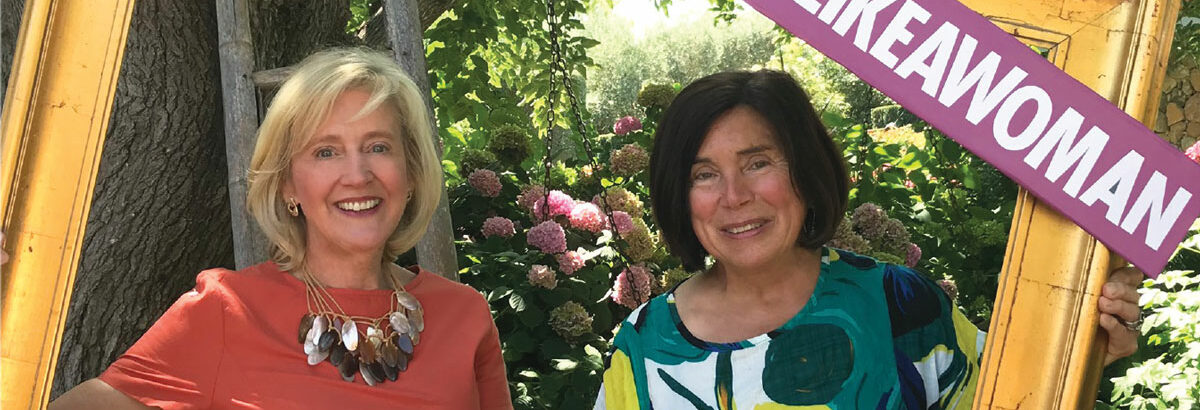A decade of $100,000 grants changes the destiny of Valley nonprofits.
Words Jonah Raskin
If liberated women have known for years that “Sisterhood Is Powerful,” they’re now saying, increasingly, that Sisterhood plus generosity not only empowers women, but also helps change the world for the better. One vehicle for that kind of generosity is Impact100, a democratic decision-making and focused philanthropy in which at least 100 women come together in one community, each woman donates $1,000, and that $100,000 (or more) is donated to one local charity.
The idea was birthed in Cincinnati, Ohio, in 2001 by Wendy
Steele, a pioneer in the Women’s Collective Generosity Movement, who reasoned that more good could come from a single, large change-making grant than numerous small ones. The simple model worked. Steele’s inaugural effort raised $123,000 for a low-income dental clinic that was transformed by the grant.
Since then, the model has spread across the country and beyond, and there are now more than 50 autonomous Impact100 chapters across the U.S., the UK, and Australia. To date the collective groups have given away close to $80 million worldwide.
Impact100 Sonoma was launched in 2009, has just closed its first decade, and is now well into its 11th giving year. Lynne Lancaster, one of the group’s founding members and now its co-president, along with Angela Ryan, comes from Minneapolis/St. Paul, which she describes as “an extremely philanthropic area.” Her background was in business, where the bottom line, not charity and compassion, usually comes first. Sonoma isn’t Minneapolis/St. Paul, but it has no lack of generosity. Lancaster ought to know. She’s lived here for 20 years and, as she explains at an outside table on the Sonoma Plaza at Basque Boulangerie, “People are very generous in the Valley. It’s not hard to find women willing and able to give $1,000.” She adds, “You don’t have to be Bill and Melinda Gates to give.”
Last year the 300-plus enthusiastic members of Impact100 Sonoma handed out more than $300,000 to nonprofits, including the annual $100,000 impact grant to the Sonoma Valley Community Health Center’s Vision Clinic, as well as a $50,000 Tenth Anniversary Grant to Vintage House, to expand its programs. Over the years the $100,000 impact grants have gone to Las Luz Center, 10,000 Degrees, the Sonoma Valley Education Foundation, among several others. Smaller grants are too numerous to list, but last year they included $20,000 for Art Escape, Ceres Community Project, the Flowery Elementary School PTO, Legal Aid of Sonoma County, Teen Services Sonoma, and the North Coast Conservation & Development Council. From 2010 to 2020, the organization, a 501(c)(3) nonprofit run entirely by volunteers, has given out $2,689,000.
Grant recipients are voted on by the membership, and feelings can run high because, says Lancaster, “individual members of the group have favorites they want to give money to.” Sometimes that leads to conflict, “but on the whole,” she says, “we work democratically and collaboratively.”
In the beginning, members tended to be older retirees, but now they cross several generational lines, including traditionalists, baby boomers, Gen Xers and millennials. “We’re bringing in younger and younger women,” Lancaster says.
The busiest time of the year for Impact100 is January to June. Grant proposals are due soon after the start of the calendar year. They’re reviewed from February to April, along with on-site visits. Voting takes place in May after the finalists introduce themselves and make presentations. Awards are handed out in June. The whole process, from beginning to end, is transparent and built on trust. “It comes down to trust,” Lancaster says. “We’re not looking over anyone’s shoulder. Indeed, we’re guided by the notion that the groups and organizations that receive grants will do the best they can do with the money.” She adds that nonprofits “often screw up,” but that it’s “OK to make a mistake.” When that happens, Lancaster says, “You fix it.”
Lancaster didn’t start off as co-president, but rather worked her way up the ranks of the organization, putting time in on various committees. Collaborating with other women gives her a sense of purpose. Giving away money provides a sense of joy. What’s harder is raising funds. “That’s the Catch-22,” Lancaster says. “The time it takes to collect money takes away from the giving.” But nothing can cloud the joy of giving a $100,000 impact grant that members know can change the future of charitable organizations and the populations they serve. It’s an empowering program for recipients, and for the mothers, sisters, and daughters who are demonstrating the power of a Women’s Collective Generosity Movement right here in Sonoma.
Jonah Raskin has learned slowly that it can be better to give than to receive.

